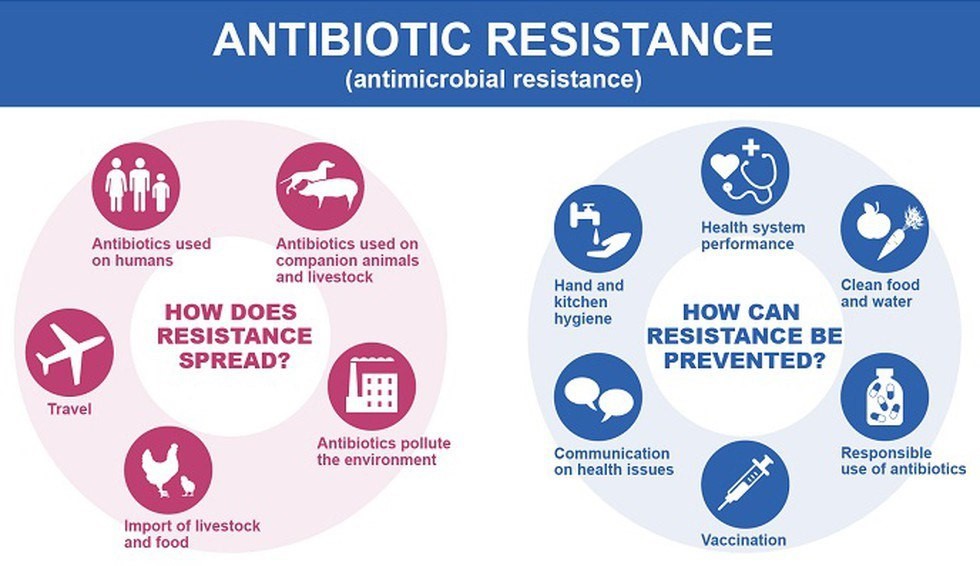Recently the National Centre for Disease Control (NCDC) in a study found that over half of the nearly 10,000 hospital patients surveyed were given antibiotics to prevent, rather than treat, infection.
Antimicrobials - including antibiotics, antivirals, antifungals and antiparasitic - are medicines used to prevent and treat infections in humans, animals and plants.

To know more about the silent pandemic of AMR click here
India carries one of the largest burdens of drug-resistant pathogens worldwide.
|
Surveyed patients in % |
Reason for antibiotic prescription |
|
55% |
Given prophylaxis as a preventive measure |
|
45% |
It is given to treat infections |
|
6% |
To identify the specific bacteria |
The World Health Organization (WHO) included AMR as one of the top 10 threats to public health in 2019.
|
Steps taken to control AMR |
|
Global initiatives
India’s initiatives
|
References